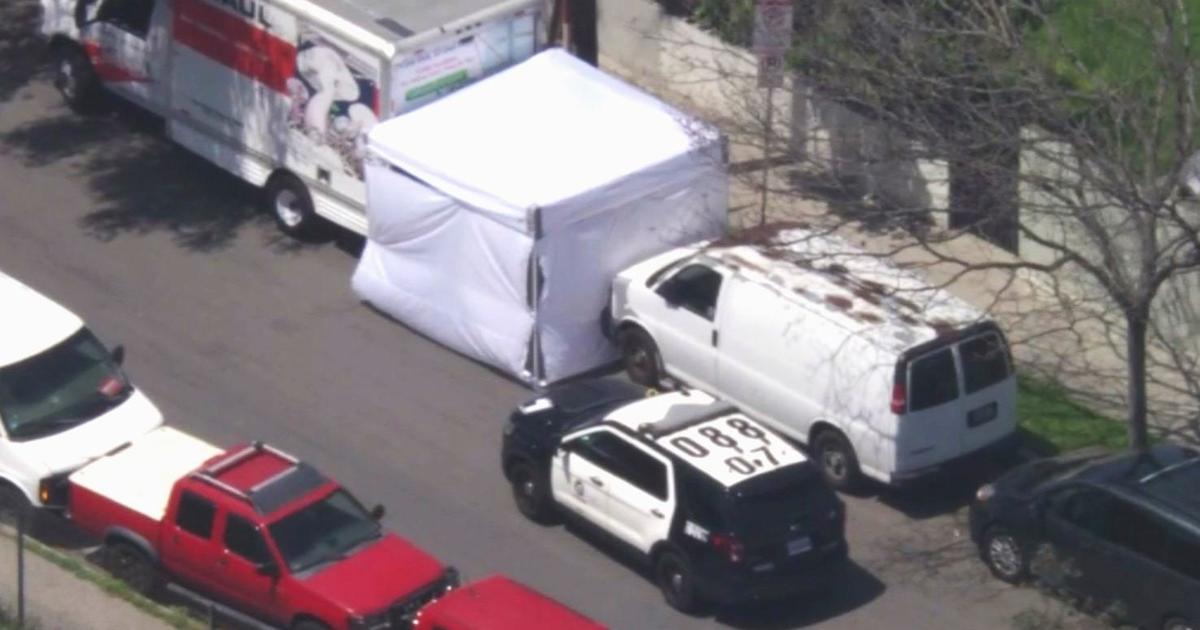Only On 2: Couple's Dream Home Taken Over By House-Eating Mold
LOS ANGELES (CBS2) — From the front, Judy and Walter Moore have the picture-perfect looking house. Tree-lined street, idyllic Carthay Circle neighborhood, a dream.
The back of the house tells an entirely different story.
It's like something out of a horror movie. And they have been living the nightmare for two years.
CBS2's Kristine Lazar reports the Moore's beautiful home is under attack from what can best be described as a house-eating mold.
"It's a wreck," says Judy Moore, "There is no stucco in the back. The windows are gone. There's particle board and torn plastic. It looks like someone who is in the middle of tearing the house down."
The culprit? A little-known mold called poria incrassata, or poria, for short.
The mold literally grew overnight. It came through floorboards. It was like nothing the Moores had ever seen.
"It came through 3/4 inch wood," says Judy. "It looked like French baguettes." Adds Walter, "It was all around my shoes. It was creepy."
Initially, the Moores thought the mold was confined to a bathroom closet where a pipe came uncapped.
When a mold removal team came out to visit, they let the Moores know the problem was much more severe.
Poria can eat through as much as an inch of wood per day and the Moores say their insurance company -- Safeco -- waited 57 days to dispatch an inspector.
Crews dressed in hazmat suits broke the bad news. "They told us 'We've got to stop work because the fungus has spread up into the walls supporting the roof,'" said Walter. "And they had to bring in other contractors to put up a false wall to keep the roof from collapsing."
Luis De La Criz is an expert on poria. Through his career, he has visited thousands of affected home in Long Beach, Newport Beach and Thousand Oaks. "It can destroy an entire house in six to eight months," he says.
Unlike most molds, poria doesn't need moisture to thrive. De La Cruz says poria can travel through soil to reach a home.
Poria invaded the Moore's home in the master bedroom, bathroom and the hallway in between. Contractors estimate it will cost between $350,000-$700,000 to rebuild.
The Moores say Safeco has agreed to pay a lot less, about $18,000.
The couple says their policy is worth hundreds of thousands. "You buy the all-risk homeowners insurance for sudden, accidental events. Well, this was as sudden as it gets. This was overnight."
The Moores complained to the State Department of Insurance. They sent Safeco a letter, which read in part, "An investigation by the department's Claim Services Bureau has found your company to be in non-compliance with California insurance code section 790.03" that deals with unfair claim settlements. (Despite the letter, a District Court judge threw the Moore's lawsuit out. They have filed an appeal with the 9th Circuit Court. The litigation is pending.)
Lazar reports Safeco refused a request for an interview but did release a statement: "The court dismissed Mr. Moore's complaint and he has filed an appeal. Safeco Insurance will not be commenting further on this matter because it is in litigation."
The only reason the Moores can continue to fight in court? Walter Moore is a practicing attorney. He thinks their case could take another two years to resolve.
In the meantime, they don't know if the poria continues to run amok. "The other fear is that the fungus is still spreading and the whole house may have to be torn down. We don't know how far it's gone until we continue to tear down walls and we can't do that because then we would have nowhere to live."
The Moores aren't alone in dealing with poria.
A year before they started battling the mold, neighbors just a few blocks down had their garage overrun by poria.
The Moores warn their neighbors to be on the lookout. Usually by the time you have spotted it, experts say it's often too late.
"This stuff spreads like an invisible, heat-less, odorless fire that goes through your house and you don't even know it," De La Cruz says.
The times poria generally blooms? May and November. We're headed into another destructive time.
"No chemical will kill it,"De La Cruz says.
The only way to combat it is to tear down walls like the Moores are doing, but they are left wondering if they will ever be able to put the walls back up.
"This house is our biggest investment," says Walter. "It's our life savings. And half of it is now worthless. The other half is dubious. But that's why you buy insurance."



